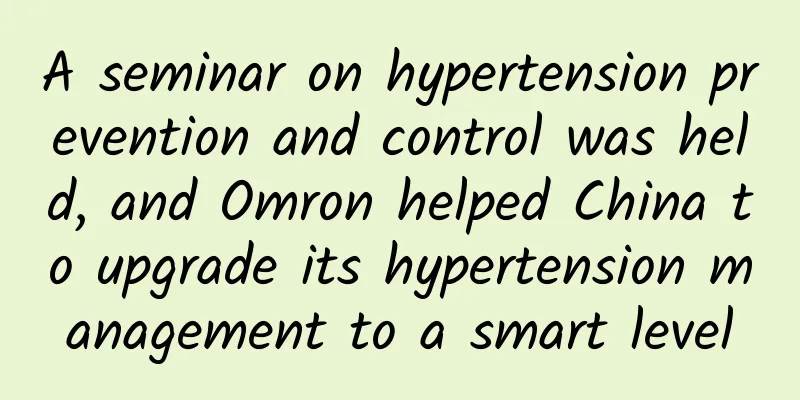What does Huawei's ultra-high-density UPS module mean to data centers?

|
[51CTO.com original article] With the continuous deepening of cloud computing, artificial intelligence, and big data technology and applications, the data center industry is brewing a new revolution. In February 2020, the energy link of the data center took the lead in ushering in an epoch-making innovation - Huawei launched a new UPS power module for the global market, with a single module power density of 100kW/3U, which is 1 times higher than the mainstream level in the industry. This is news that will make data center design engineers "excited", because it means a higher density of module combinations, lower energy consumption, and more space-saving equipment rooms! It is understood that if Huawei's new FusionPower 2.0 data center power supply and distribution solution based on 100kW modules is adopted, "one cabinet, one megawatt" can be achieved, which can save 50% of the equipment room floor space compared to the traditional parallel end-to-end solution! The "bottomless pit" of data centers Many people may not have a clear idea of the value of saving 50% of floor space. In the past few years, if you were to investigate what the biggest expense of building a data center was, 90% of people would answer that it was buying servers! But in recent years, the answer is different. Everyone knows that buying equipment is only a one-time investment, but maintaining the operation of the data center, the room rent, wind, water, electricity, network bandwidth, and personnel expenses are the real "bottomless pit". What is even more unstoppable is that when data center managers start to find ways to "increase revenue and reduce expenditure", whether it is a large or super-large cloud data center driven by efficiency, or an edge data center driven by user experience, its IT computing power is continuously evolving, and CPU and server power are also continuously increasing. This is of course equivalent to expanding the capacity of the computer room, increasing electricity bills, increasing air conditioning and refrigeration losses, and increasing water bills... The special report "Energy Use and Carbon Dioxide Impact of the Data Center Industry in the Past Five Years" shows that in 2018, China's data center energy consumption was 160 TWh, and it is predicted to reach 266.79 TWh by 2023. While the data center industry is developing rapidly, the power supply and distribution systems of traditional large data centers often become a "shackle" for the expansion of data center scale due to high energy consumption, large land occupation, difficult operation and maintenance, and poor stability. The solution is to "transform" the data center infrastructure through high density, modularization, and green energy saving. Now let's go back to the first paragraph of the article. Do you have a completely different understanding of this ultra-high-density UPS module launched by Huawei? There is no doubt that with its smaller size, lower heat consumption, and stronger heat dissipation, Huawei's UPS with a single module power density of 100kW/3U will bring a subversive change to the energy consumption of data centers. Efficient, reliable, and simple, creating Huawei UPS highlights! Power supply is a very important part of the energy consumption of data centers. Huawei has found that modular power supply based on availability and elastic expansion is an inevitable trend of development. As the power density of IT increases, the power density of UPS will continue to evolve. Take the FusionPower 2.0 Data Center Power Supply and Distribution Solution 1200kVA equipped with a 100kW/3U UPS as an example. This is an advanced power supply and distribution fully modular product designed by Huawei for large data centers through high-density design. Only 12 power modules are needed to achieve "one cabinet, one megawatt". For users, 1200kVA can be truly efficient, reliable and simple. From the perspective of space saving, 1200kVA occupies only 1.6 square meters of floor space, supports wall installation and busbar connection, and reduces the end-to-end system solution from 8 cabinets to 4 cabinets, saving more than 50% of floor space. If paired with Huawei's high-energy-density SmartLi smart lithium battery, the actual floor space saving is more than 70%. Taking the deployment of 10 sets of 1200kVA Huawei FusionPower2.0 systems as an example, 40 cabinet spaces can be saved, helping ISP customers increase their revenue by RMB 4 million each year. From the perspective of application efficiency, the 1200kVA system efficiency is as high as 97%, which is 1% higher than the currently recognized 96% in the market. Don’t underestimate this 1%, even a 1% increase in efficiency can extend the life cycle and save more than 400,000 yuan in electricity bills. From the perspective of reliability, the modular hot-swappable redundant design of 1200kVA key components allows the system to switch quickly when any failure occurs, without affecting the normal operation of the system. The system has no single point of failure and operates with high reliability at all times. In terms of software, reliable plug-in logic is designed to ensure that the system is not affected; in terms of hardware, patents and unique designs are used to ensure terminal reliability. In addition, the UPS system can also perform predictive maintenance on busbar temperature rise, lithium batteries, and key components in the module such as capacitors and fans to prevent problems before they occur. From the perspective of operation and maintenance management, the 1200kVA power module, static bypass module and energy control unit all support hot swapping, and ordinary operation and maintenance personnel can complete online maintenance work within 5 minutes. For the capacity expansion issue that data center users are most concerned about, Huawei can implement phased deployment, flexible capacity expansion based on business development, reduce initial investment and realize on-demand deployment. Just imagine that as cloud data centers become larger and larger, and edge computing centers become smaller but more numerous, how can we reduce costs in computer rooms where every inch of land is valuable? How can we reduce energy consumption while ensuring the stability and efficiency of data center infrastructure? How can we protect the original investment in traditional data center infrastructure? How can we reduce operation and maintenance costs and improve management efficiency? This is clearly the highlight moment of Huawei's new FusionPower 2.0 data center power supply and distribution solution. To know the details of the black technology, please watch the ultra-high-density UPS module technology decryption meeting! It is easier said than done. How did such high-level UPS products and solutions come about? This is naturally inseparable from Huawei Network Energy's accumulation and innovation. For more than 20 years, adhering to the experience of power supply application, Huawei has continuously made breakthroughs in the exploration and innovation of UPS, and insisted on tailoring a safe, stable and efficient power supply platform for customers, committed to helping customers ensure power supply reliability, reduce energy consumption, simplify maintenance, and facilitate management, thereby saving customers operation and maintenance costs and focusing on the stable operation of the main business. In such a short space, it is impossible to fully describe the black technology of Huawei's cross-generation UPS-Fusion Power series. I believe that many professional netizens will inevitably have doubts: How is the heat dissipation problem solved after reducing the size? In addition to using AI technology to predict the fan, capacitor, and battery life of UPS, what else has Huawei done for reliability? What other innovations does FusionPower 2.0 have? Will Huawei UPS turn to smart lithium batteries in the future? Is the 100kW/3U UPS the ultimate of Huawei? ... For these questions, you may want to go to Huawei's #Σco时间# to watch the ultra-high-density UPS module technology decryption meeting! During the extraordinary period of the epidemic, Huawei has specially launched the #Σco时间# series of columns, in the form of online live broadcast + interaction, to discuss technological changes and industry transformation. At 3 pm on March 13, the head of Huawei Network Energy will be a guest in the live broadcast room to personally explain the technical story behind the new 100kW/3U UPS product. At the live broadcast site, the Tuanbowa R&D team will reveal the 100kW black technology for the first time. Interested friends, hurry up and watch! If you have any inquiries or purchase needs in the future, please scan the QR code of Huawei Enterprise Business JD Store! [51CTO original article, please indicate the original author and source as 51CTO.com when reprinting on partner sites] |
<<: The need for SD-WAN in a multi-cloud world
Recommend
Seven IT salary and hiring trends for 2018
The good times for tech workers will continue int...
The future development trend of the Internet will transition from HTTP to IPFS
We know that IPFS is a new Internet underlying pr...
What is active monitoring without embedding code? Technology exploration behind improving user experience
In the Internet age, whoever controls the users c...
IPv6 "highway" has been fully built, the next stop is to focus on "opening to traffic"
Recently, the Ministry of Industry and Informatio...
A Brief Analysis of TSN Time Sensitive Network Technology
With the continuous development of industrial int...
How to Start Building an SD-WAN RFP
Enterprise network teams need to draft software-d...
Global fiber shortage threatens 5G and data center infrastructure
According to a report by the Financial Times (FT....
RAKsmart: Japan/Korea servers starting from $59/month, high-defense servers starting from $79/month, 1~40G large bandwidth servers, etc.
Earlier this month, I shared the promotional VPS/...
GeorgeDatacenter: $45/year-AMD Ryzen CPU, 4G memory, 60G NVMe hard drive, 5TB monthly data transfer
GeorgeDatacenter is a foreign hosting company fou...
A wonderful explanation of the four major communication interfaces: UART/I2C/SPI/1-wire
[[350985]] 1. Qiu Qianzhang's Light Kung Fu F...
Is the future of the new WIFI standard 802.11ad reliable?
Now there is a new WIFI standard that can increas...
Comprehensively view 5G construction and development to accelerate the expansion of 5G application ecosystem
At present, countries around the world are accele...
CloudCone: Los Angeles CN2 GIA line server 15-100M unlimited traffic starting from $82/month
I have shared information about CloudCone many ti...
The outbreak of 5G still cannot prevent the overall decline of the mobile phone market
In this year hit by the epidemic, sales in the mo...
Can you tell me about Zookeeper's ZAB protocol? Sorry, I have a stomachache!
This article is reproduced from the WeChat public...









